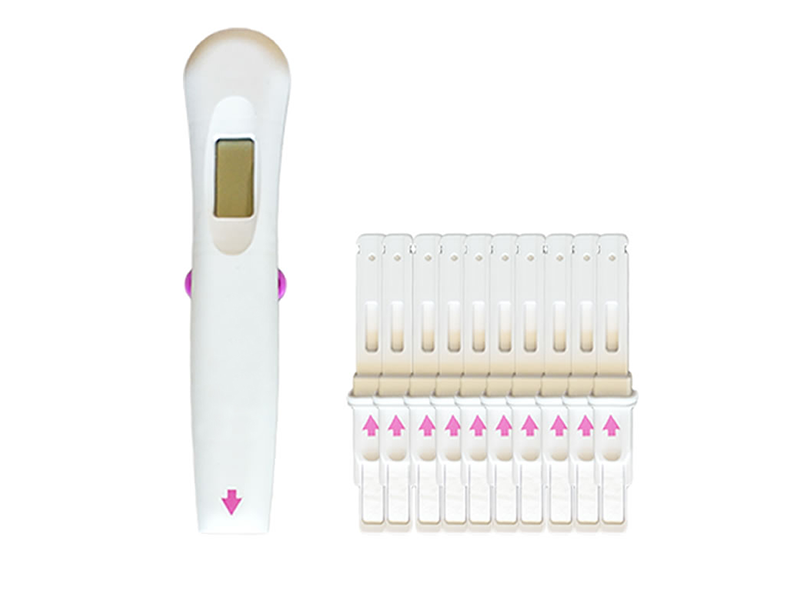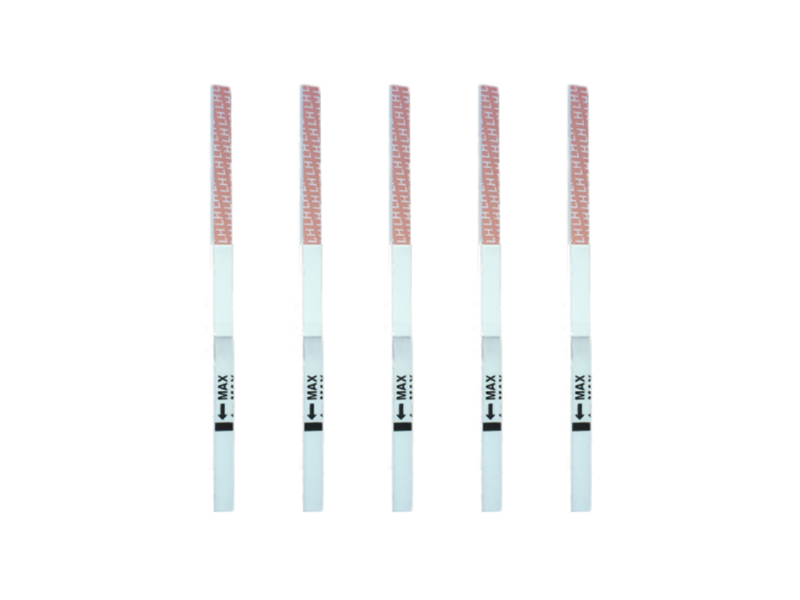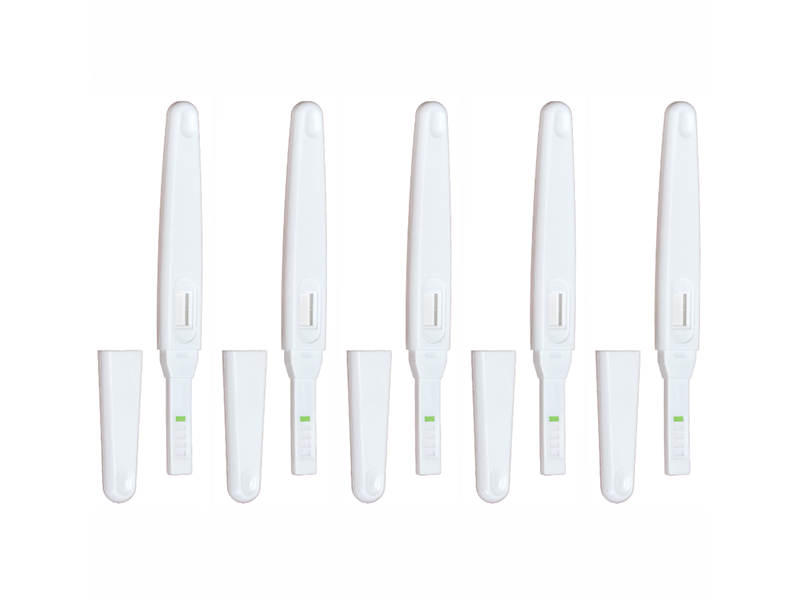Which ovulation test should I choose?

The hard truth for couples trying to conceive is that there are only two fertile days during which a woman can get pregnant: the day before ovulation and the day of ovulation itself.
The egg lives for about 24 hours in the woman’s fallopian tube, waiting for the sperm to fertilize it. If this window is missed, there’s no chance of pregnancy, and the couple will have to wait for the next menstrual cycle.
This is why ovulation tests are essential for couples trying to conceive, especially for those facing infertility issues or if the woman has irregular cycles.
By detecting the rise of the LH hormone at least 24 hours before ovulation, the test can accurately indicate fertile days and dramatically increase your chances of pregnancy.
But which is the best ovulation test? How can you choose the right one based on your needs?
There are 3 types of HomeTest ovulation tests:
- Digital Ovulation Tests
- Ovulation Test Strips
- Midstream Ovulation Tests
Let’s go over everything you need to know.
How do ovulation tests work?
The key sign of ovulation is the sudden rise in LH (luteinizing hormone), which signals the ovary to release an egg.
This LH surge can be detected in urine, which is exactly what ovulation tests do. This way, the woman knows from the previous day when ovulation is coming, so it’s best for the couple to have intercourse on those two days.
Using ovulation tests is the most reliable way to boost your chances of getting pregnant without relying on uncertain ovulation symptoms.
What is the most reliable ovulation test?
Let’s start with the most important thing to remember:
There is no difference in reliability among the three types of tests. All three are equally accurate. They are all made to the same quality standards as all HomeTest products.
No matter which test you use, once it turns positive, the result is the same because accuracy is equally high across all formats. What matters is detecting the LH surge.
With that in mind, the sensitivity is the same for all tests, but what changes is how they are used and the level of convenience they offer based on individual preferences.
So, which type should you choose?
Here’s a comparison of the ovulation tests to help you find the one that suits you best.
Digital Ovulation Tests
Digital ovulation tests include the following:

They consist of a reusable digital reader and single-use test sticks.
Watch the instructions for digital ovulation tests in the video below:
These are the latest in technology, very easy to use, either by dipping or by placing them directly in the urine stream. They also eliminate the need to interpret results—they do it for you. The result shows as YES+ or NO- in just 3 minutes!
If you’ve used analog tests before and weren’t sure if the result was positive, digital tests leave no room for doubt—just a clear YES+ or NO-.
Digital ovulation tests detect LH with such precision that for 97% of cases, you only need to test once a day—ideally with morning urine. When LH peaks, you’ll see a YES+ on the display.
Like midstream tests, digital tests are ideal for non-private settings, such as your workplace, due to their versatile usage options.
However, they are the most expensive option, although HomeTest allows you to purchase the digital reader once and replace only the sticks, saving you money.
Ovulation Test Strips
Test strips include the following:

They are designed to be small and easy to use. You’ll need to collect a urine sample in a plastic cup (a sterile container is not required).
Watch the video instructions for using ovulation test strips below:
Choose test strips when you want to keep your costs low. They're the most budget-friendly option, as they don’t have the plastic housing found in midstream or digital tests, reducing production cost.
They’re the best option if you have irregular cycles and need to test multiple times during the month. Cheap ovulation tests like Hometest’s strips are the ideal solution.
Since these are analog tests, showing the result as lines for you to interpret, they’re perfect for tracking hormone progression in detail. In some cycles, LH doesn’t rise in a clear pattern.
Check out this article we’ve prepared: How long does the LH surge last in each woman?
If needed—by choice or your doctor’s advice—you can track your body’s exact hormone behavior. These analog tests show how dark the second line becomes, giving you more insight than a simple positive/negative result.
Test strips must be dipped in urine. Although usage is easy, some women may not prefer using a cup. In that case, the other two test types offer alternative usage options.
Midstream Ovulation Tests
Midstream tests include the following:

They come with a plastic casing and cap. You can either dip them into collected urine (like strips) or place them directly into the urine stream.
Choose midstream tests if you want all the features of strips plus the convenience of using them without a cup.
Watch the video instructions for midstream ovulation tests below:
Since they’re analog and show results as lines for you to interpret, you can monitor your LH progression, just like with strips.
Because they can be used both ways (with or without a cup), they’re great for use in public settings—like at work—or for women who prefer not to use a container.
View Midstream Ovulation Tests
In summary, the choice depends entirely on your budget, preference for interpreting results, and where you plan to use the tests.
All tests provide the same accurate results, but differ in presentation, usability, and cost. If affordability is your priority, strips are best. If comfort and clear results matter most, choose the digital option.
Check out all of Hometest’s ovulation tests, which offer maximum accuracy and reliability—equal to or better than pharmacy ovulation tests.
We are, of course, here to assist with any questions you may have about our tests!
0 comment(s)